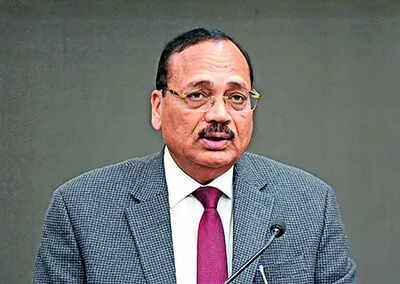NEW DELHI: Chief Justice Surya Kant has said the growing backlog of cases – 5.4 crore in trial courts, high courts and Supreme Court put together – is a manifestation of deeper structural bottlenecks in the system.The CJI declined to elaborate on his efforts to ensure adequate representation of women and regional representation among SC judges as well as the issue of selective implementation of collegium recommendations for appointments and transfers by the government. “I am working on these issues,” he said.After taking oath as CJI on Monday, Justice Kant told TOI, “A scientific and comprehensive approach is essential to address the challenge of pendency across all tiers of the judiciary.” As of Tuesday, 4.8 crore cases were pending in trial courts, 63.8 lakh in high courts, and more than 90,000 in SC.Batting for a healthy three-tier judiciary that expeditiously addresses citizen’s grievances, the CJI said, “Our judicial system operates as an integrated whole, with each tier serving a crucial purpose. The effectiveness of our democracy depends on the robust functioning of all three levels of the judiciary.” Attributing pendency mainly to acute infrastructural deficiencies, the CJI said, “A coordinated effort by government and the judiciary is needed. What is urgently required to be done are – timely identification of land and resources for courts, equipping them with essential facilities and expeditious completion of judicial infrastructural projects,” he said, adding that the emphasis on mediation and alternative dispute resolution mechanisms is expected to lessen the burden on courts in the future.Asked about the growing sense of disappointment among HC judges because of the ‘big brother’ approach of SC on the judicial side, the CJI said, “The relationship between HCs and SC is one of constitutional complementarity, not competition. Both institutions serve distinct yet harmonious roles within our federal democracy.”He said the HC’s power under Article 225 (jurisdiction of HCs) is in many aspects broader than SC’s power under Article 32 (right to constitutional remedies). And, in many instances, SC has asked litigants to first approach HCs for ventilating their grievances, the CJI said. “The real strength of HCs lies in their proximity to the people. They engage directly with regional realities and local challenges,” he said.”A vast majority of constitutional matters – right to protection, administrative oversight, executive accountability – continues to be addressed by HCs. This is where I believe the Constitution truly lives in daily practice,” the CJI said, adding that SC’s visibility in certain matters of national importance does not alter this constitutional architecture.



